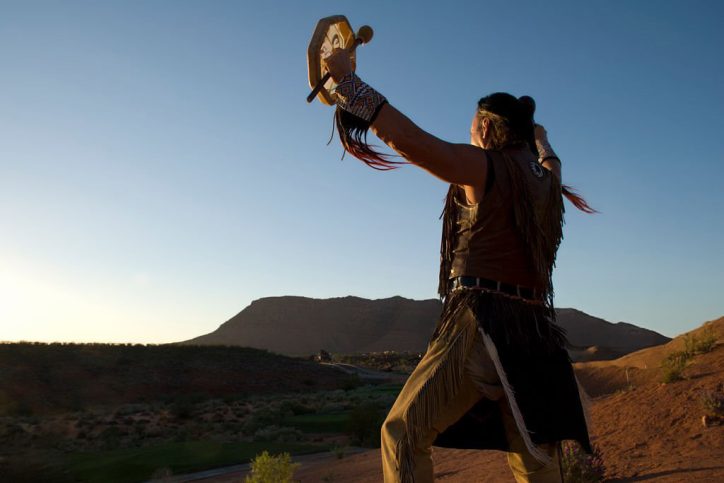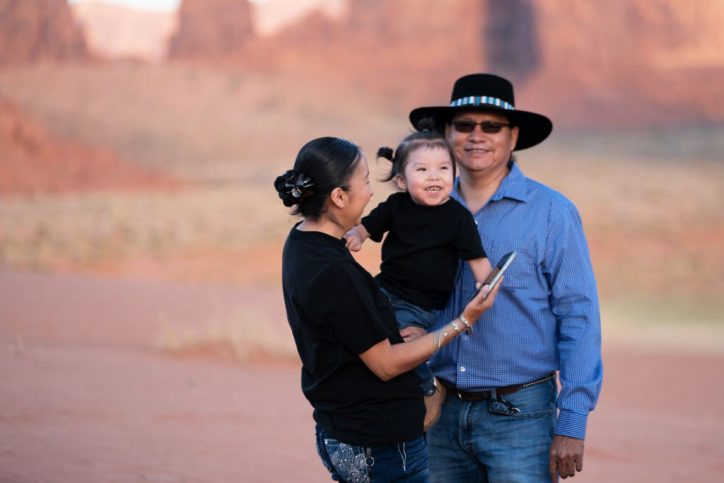Wellbriety Therapy
in Chandler, AZ
What is Wellbriety Therapy?
The Wellbriety Movement is a recovery paradigm rooted in Indigenous culture and tradition. It guides individuals toward lasting sobriety by focusing not only on abstaining from substances but on restoring balance across the physical, emotional, mental, and spiritual dimensions of life. At its core, Wellbriety promotes healing from trauma, reconnection to culture, and strengthening of community ties.
- The Sandtray: A shallow tray filled with sand serves as the physical and symbolic foundation for the therapeutic process. Clients use the sand to create landscapes or settings that represent their inner world and emotional state.
- Miniature Figures Objects: A collection of miniatures—such as people, animals, buildings, and symbols—allows clients to visually express memories, relationships, and emotions. Each selection and placement carries personal meaning and insight.
- The Therapist’s Role: The therapist observes without judgment, guiding the process with empathy and curiosity. They help clients reflect on the meaning of their creations and connect those symbolic representations to real-life experiences and healing goals.

Why Wellbriety Matters in Addiction Recovery
Healing the Whole Person — Mind, Body, Spirit, and Community
key benefits:
Trauma and intergenerational grief: Many Indigenous and marginalized communities carry historic and generational trauma that contributes to addictive behavior. Wellbriety provides culturally sensitive pathways to address these deep wounds.
Holistic healing: Rather than treating symptoms alone, it looks at the whole person: body, mind, heart, and spirit.
Cultural reclamation: Through traditional practices, individuals regain connection to lineage, values, and purpose.
Community and accountability: Wellbriety is not an individual journey alone—it emphasizes walking in relation to community, elders, and cultural teachings.
The Wellbriety approach reminds us that true recovery extends far beyond sobriety — it’s about restoring harmony within ourselves and with the world around us. By embracing culture, spirituality, and community, individuals find a deeper sense of belonging and purpose that supports lifelong healing. Wellbriety matters because it transforms recovery into a sacred journey of renewal, balance, and hope.
The Four Laws of Change in Wellbriety
Wellbriety is guided by four foundational principles (laws of change) that help structure personal and collective healing:
- Change comes from within Real, sustainable change must begin in the heart. When a person feels internal motivation and commitment, recovery becomes more than a program—it becomes a path.
- Vision precedes growth Healing begins when we imagine a better future. Vision gives direction for change, inspiring one to move beyond current pain and toward a renewed life.
- Great learning is essential Healing is not solitary—it requires education, reflection, accountability, and openness to being taught. As individuals heal, they model new ways for community.
- Create a Healing Forest A Healing Forest represents a supportive environment—spiritual, relational, cultural—that sustains sobriety. It’s a place (physical or relational) where transformation is nurtured and nurturers grow.

How a Wellbriety-Centered Program Works
Healing the Whole Person — Mind, Body, Spirit, and Community
A Wellbriety-informed recovery program typically offers:
- Culturally imbued intake & assessment
Understanding one’s cultural background, trauma history, spiritual needs, and wellness goals.
2. Blended therapeutic modalities
Integration of Indigenous practices with modern therapies (trauma-focused therapy, cognitive therapy, group work, etc.).
3. Ceremony, ritual, and cultural engagement
Regular access to sweat lodges, pipe ceremonies, elders’ teachings, talking circles, etc.
4. Healing skills development
Emotional regulation, boundaries, grief processing, self-awareness, relapse prevention.
5. Ongoing aftercare and cultural reintegration
Support networks, community engagement, continual cultural practice, mentoring.
6. Peer and community support
Circles, accountability, sharing, generative service to others.
This structure allows individuals to not only recover from substance misuse but to revitalize identity, purpose, and community relationships.
What our clients are saying on Google?
Posted onTrustindex verifies that the original source of the review is Google. Where my Journey of Healing began, my only Experience in Recovery and I would Highly Recommend this Program to anyone who is Serious about Recovery,. Without a doubt it has had a Tremendous impact in my life, to have Therapist and Staff, plus a Team who came from similar backgrounds like mine, who firmly believe in Helping others with Addiction, and A Program that is 12 step based truly inspired by the AA ways of life. The Support I continue to feel is one of Family, fellowship, comradery, and strength. This was all made possible by taking a Suggestion to seek help, but Truly Iam eternally grateful to have a foundation that bares Hope.Posted onTrustindex verifies that the original source of the review is Google. I highly recommend Recovery Syndicate, I went through the program in which they gave me tools I can utilize for the rest of my sober and clean life, making the right choices, going through the 12 steps and giving back to newcomers is amazing! My life is better now and thankful for what I have now. You can do it!!Posted onTrustindex verifies that the original source of the review is Google. Thanks for helping me with my job assessment.Posted onTrustindex verifies that the original source of the review is Google. Recovery Syndicate is an amazing program with some of the best staff! They truly care and would recommend this facility to anyone looking to change their life.







